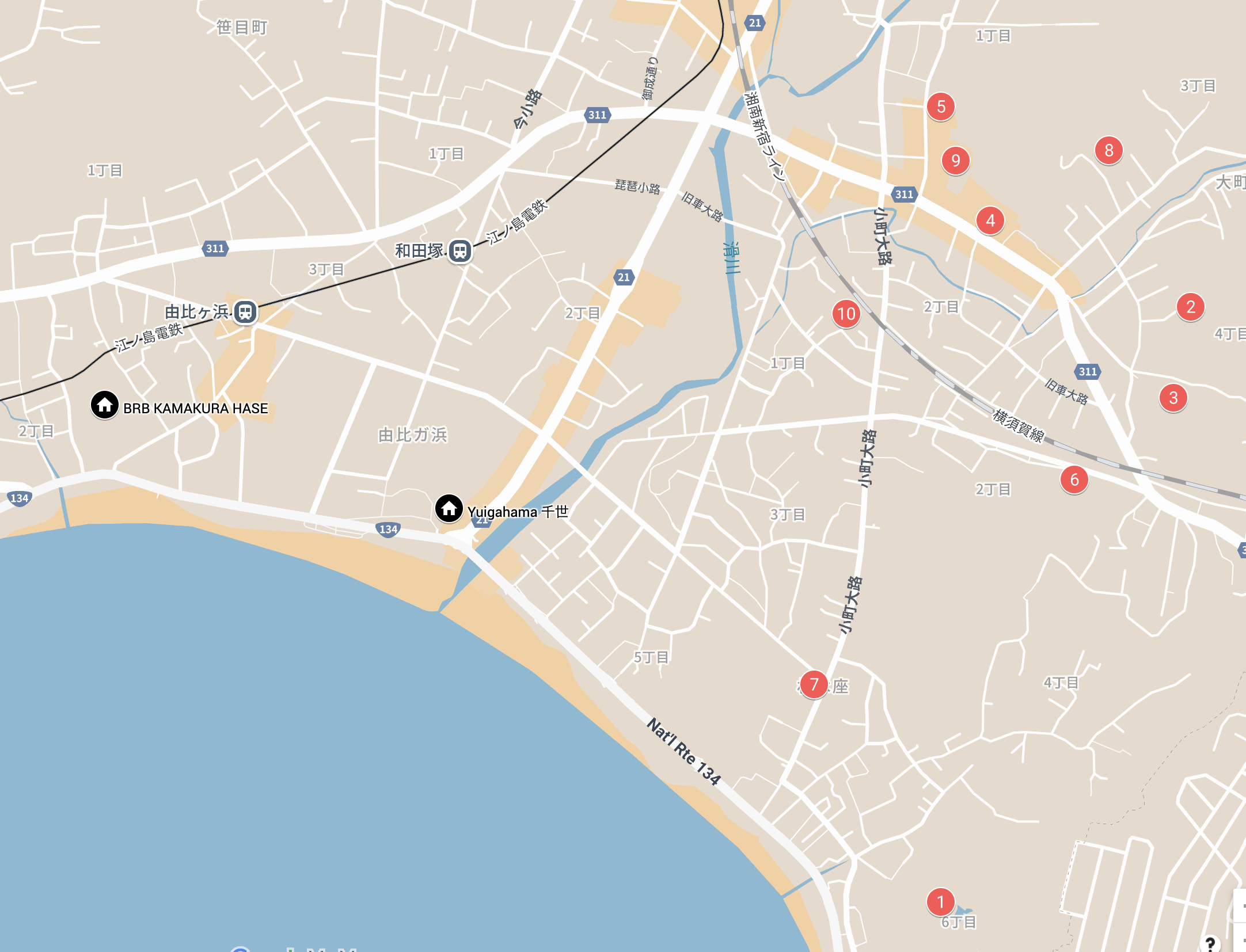AREA
F
AREA
F
Omachi / Zaimokuza Area
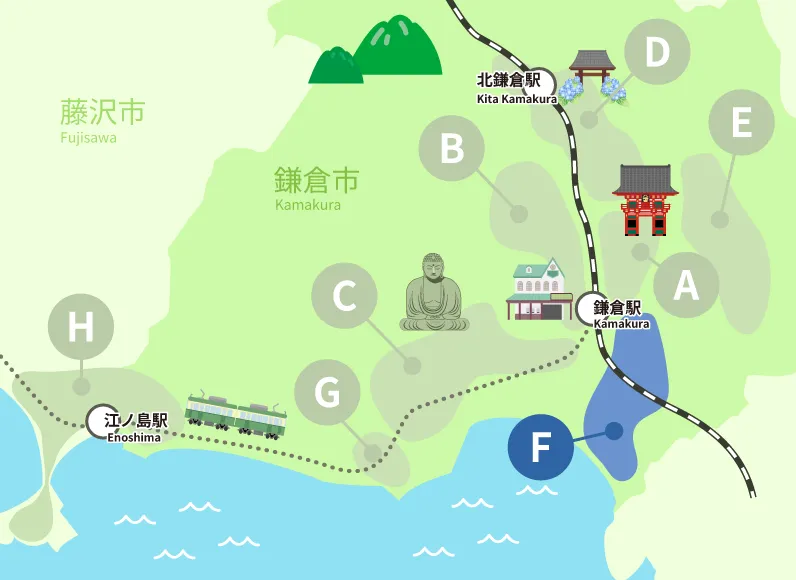
Quiet beaches and historic temples tell the story of peaceful days. Traditional events and the beauty of nature enrich the spirit.
Toshi’s Kamakura sightseeing map
- Komyoji Temple
- Myohoji Temple
(moss temple) - Ankoku-ronji Temple
- Anyoin
- Joeiji Temple (Botamochiji Temple)
- Choshoji Temple
- Kuhonji Temple
- Daihoji Temple
- Yakumo Shrine
- Yuigahama Shrine (Moto-Hachiman)
Features
"The Omachi/Zaimokuza area is a residential area surrounded by Kamakura's calm atmosphere and beautiful nature, and is a peaceful area dotted with quiet beaches and historic temples. Starting from Komyo-ji Temple, spiritual temples such as Myo-ho-ji Temple and Anyo-in Temple tell the story of the area's deep history and culture. Each temple provides visitors with peace of mind and a spirit of harmony in a tranquil environment, allowing them to experience Japan's traditions and natural beauty.
Komyo-ji Temple is recognized for its history and cultural value as the head temple of the Jodo sect, and is a place where people pray for peace and good harvests through traditional events such as ""Ojuya."" Myohoji Temple, also known as ``Moss Temple,'' offers visitors a special experience with its rich moss and tranquil environment.
Ankokuronji Temple has historical significance as the place where Nichiren wrote ``Rissho Ankokuron,'' wishing for peace in the country. Anyo-in is a temple built by Masako Hojo, and the statues of Amida Nyorai from the Pure Land and the merciful Thousand-Armed Kannon convey a message of peace.
There are temples in this area, each with its own history and culture, such as Joei-ji, Chosho-ji, Kuhon-ji, and Taiho-ji, all of which are connected to the teachings of Nichiren Buddhism and to peace. It conveys the wishes of the people and the beauty of Kamakura's nature and history to visitors. The Omachi-Zaimokuza area is a special place worth visiting for those seeking peace of mind away from the hustle and bustle of the city, with its serene beaches, rich nature, and rich history."
Sightseeing Spot
-
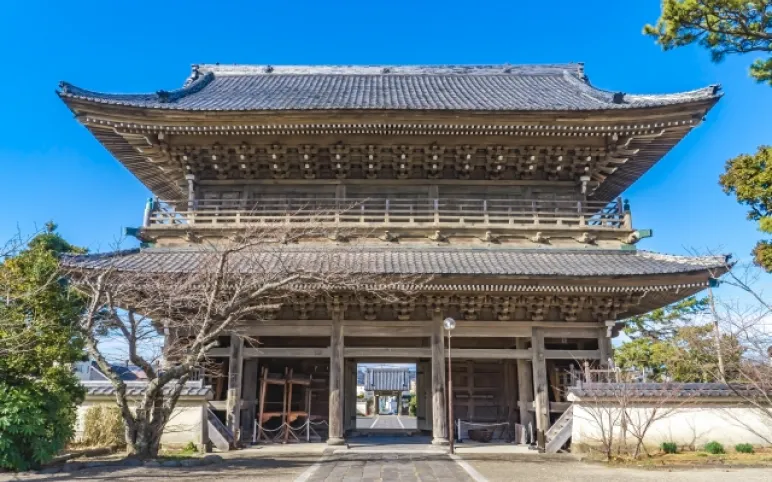
Komyoji Temple
Spectacular views of Kamakura that soothe the soul
Beyond the gate overlooking the sea and Mt. FujiKomyoji Temple, founded in the 13th century during the Kamakura period, is a religiously and historically important temple as the head temple of the Jodo sect. The annual ``Ojuya'' festival has a tradition of over 500 years and is a gathering place for people to pray for peace and a good harvest. From the temple you can see Inamuragasaki, Enoshima, and even Mt. Fuji, and its beauty has been selected as one of Kanagawa's top 50 scenic spots. Komyoji Temple, which has a harmonious blend of history and natural beauty, including the main hall, which has been designated as an important cultural property, brings a sense of tranquility and peace to visitors. Currently, the main hall, which is an important cultural property, is undergoing conservation and repair work until 2029.
-
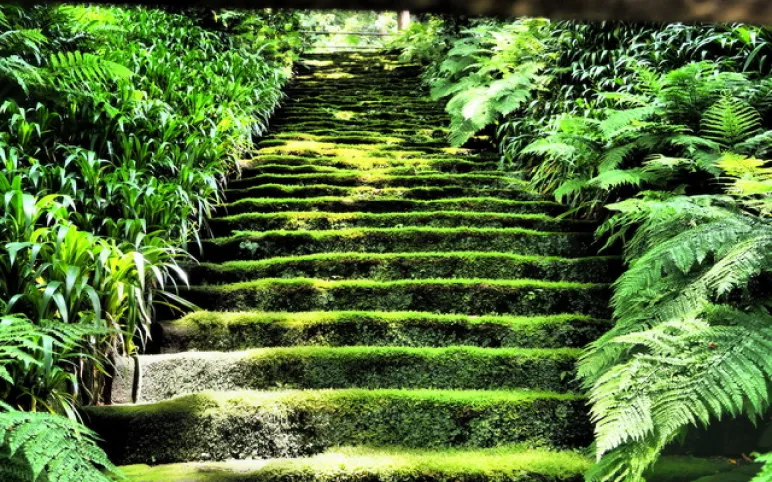
Myohoji Temple
(moss temple)The tranquility of the moss-covered stairs
The hidden beauty of KamakuraMyohoji, affectionately known as Kamakura's ``Moss Temple,'' has its origins in a hermitage built by Nichiren in the mid-13th century. The rich moss that covers the grounds and the moss-covered stone steps make it a special place to visit for those who love tranquility and natural beauty. Visitors can find peace of mind in this temple where the weight of history coexists with the grace of nature.
-
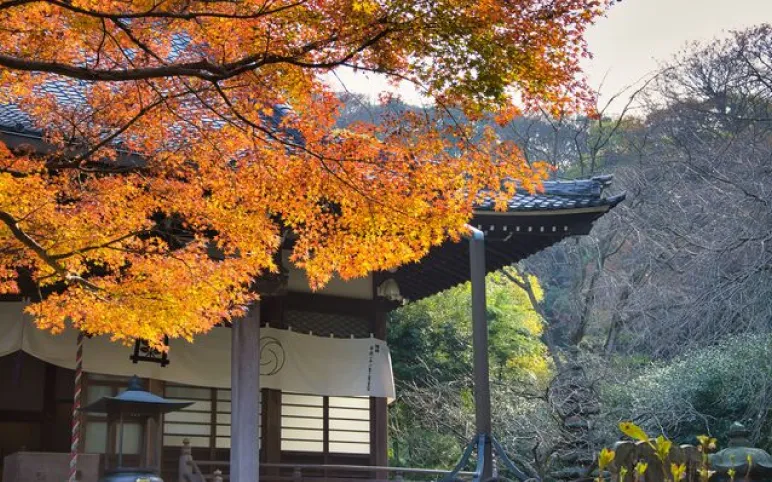
Ankoku-ronji Temple
A sacred place of silence that follows in the footsteps of Nichiren
Ankokuronji is a temple founded by Nichiren in the 13th century. It was built on the site of the former residence of the first regent, Tokimasa Hojo, and is known as the place where Nichiren wrote ``Rissho Ankokuron'', wishing for the peace of the country and the happiness of the people. It is a historical spot that fascinates visitors with its seasonal nature and the Myohozakura cherry tree, which has been designated as a natural monument by the city.
-
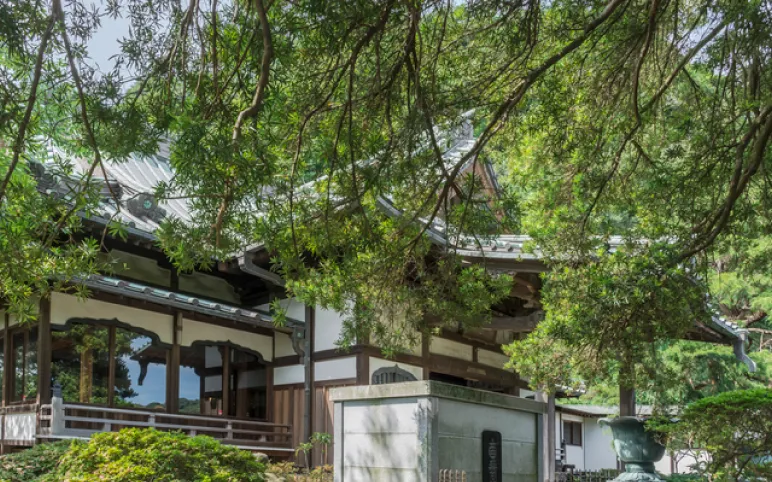
Anyoin
The legacy of Masako Hojo
Feel the breath of the Kamakura period at AnyoinAnyoin is a temple built by Masako Hojo, and is a place steeped in history and culture. Statues of Amida Nyorai of the Pure Land and the benevolent Thousand-Armed Kannon send a message of peace to visitors. Additionally, many valuable Buddhist statues, such as a bronze bell from the Edo period (17th to 19th century) and Takeda Shingen's guardian deity, add to the value of this temple. In spring, the garden is full of beautiful azaleas, and Akira Kurosawa's grave also attracts visitors.
-
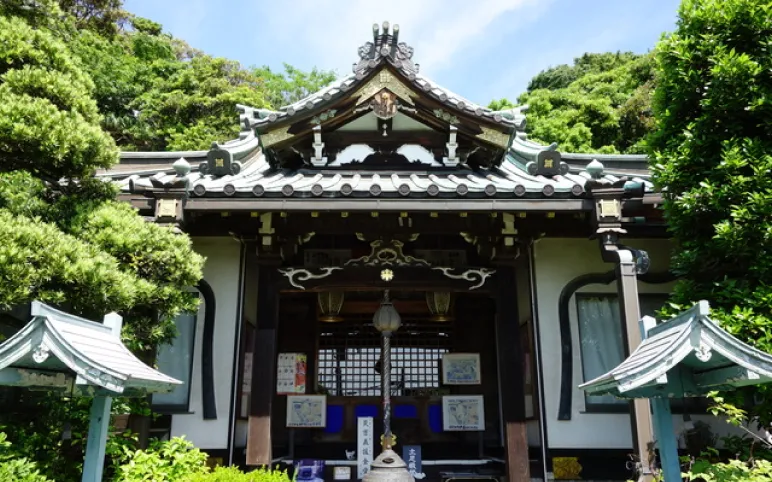
Joeiji Temple (Botamochiji Temple)
A place where faith and miracles meet
Joeiji Temple, affectionately known as ``Bota Mochi Temple,'' is a Nichiren sect temple built in the early 17th century that conveys the spirit of Nichiren, who braved hardships to spread the Lotus Sutra. It was named after the nun who offered botamochi to Nichiren before his execution, saving his life. A monument to this story is located within the temple grounds, offering tranquility and lessons to visitors seeking instruction and peace.
-
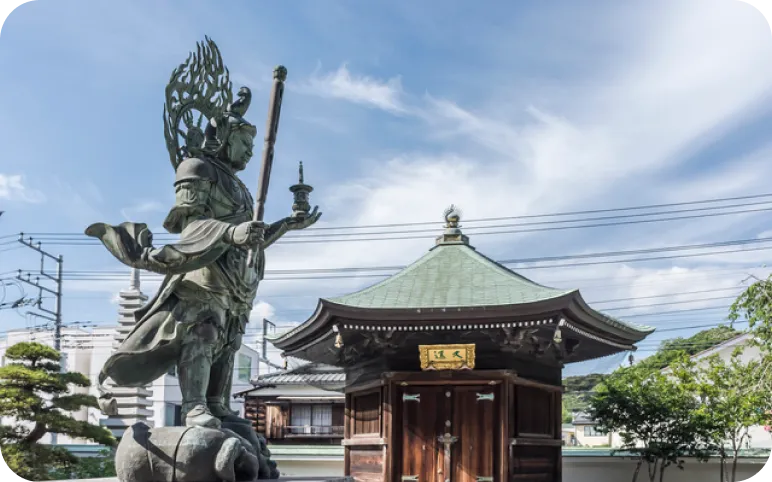
Choshoji Temple
A historic sacred place in Kamakura where the spirit of Nichiren lives on
Choshoji Temple was built on the site where Nichiren, the founder of the Nichiren sect, first set foot in Kamakura, and is characterized by its quiet grounds. This place, which was built with the support of the feudal lord and welcomed Nichiren, has a long history centered around the Hokke-do Hall, which remains from the time of its founding. It is a valuable spot that conveys the teachings of Nichiren Buddhism and allows visitors to experience the culture of Kamakura.
-

Kuhonji Temple
Yoshisada's legacy
A temple praying for peace in KamakuraKuhonji is a temple built by Nita Yoshisada in the early 14th century at his main base during his invasion of Kamakura, to console the souls of those killed in battle. It has special historical significance as the only temple built by Yoshisada after the fall of the Kamakura Shogunate. The temple's name symbolizes paradise and its role as one of the 33 Kannon pilgrimages in Kamakura attracts people who seek peace and calm.
-
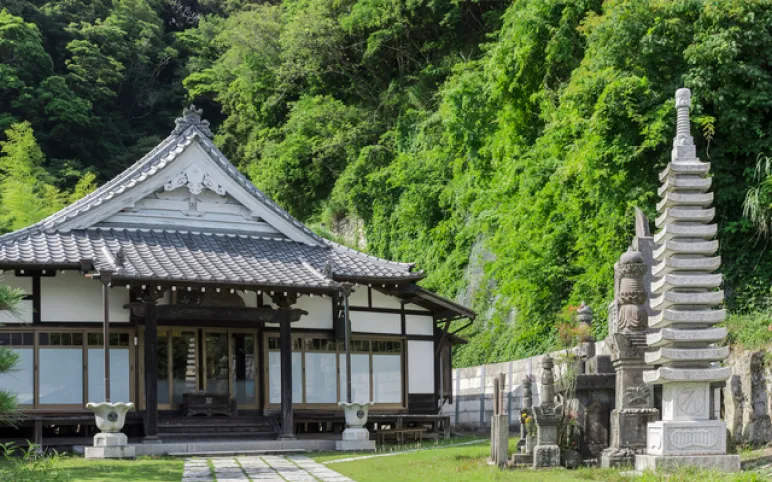
Daihoji Temple
The heritage of samurai and the teachings of Buddha
A thousand-year story in one templeTaihoji Temple is a historic place that was built in the late Heian period (late 12th century) to honor the achievements of Minamoto no Yoshimitsu, and was later rebuilt as a Nichiren sect temple. The grounds, which include the Tafuku Shrine related to Minamoto no Yoshimitsu and the Satake clan's grave, are surrounded by Kamakura's nature, and preserve the memories of the Go Sannen War, which was the stage for the expansion of power of the Minamoto family (Genji). As a place of peace, it brings peace of mind to visitors.
-

Yakumo Shrine
A Place of Serenity Wrapped in History: Dispelling Misfortune and Inviting Happiness
Yakumo Shrine, located in Kamakura, boasts the oldest history in the area and is deeply revered by the local residents as a deity for warding off evil. Established in the mid-11th century by Minamoto no Yoshimitsu, it was originally created to pray for the dispersion of epidemics and the peace of its residents. Within the shrine's precincts lie Yoshimitsu's handball stone and a treasury, evidencing the unchanging faith and culture Yakumo Shrine has inherited over the years. Annual events like the "Omachi Festival" are crucial in conveying the region's traditions and culture to the present day. The historical significance and the cultural allure that breathes life into the modern era make Yakumo Shrine an unmissable spot for visitors.
-
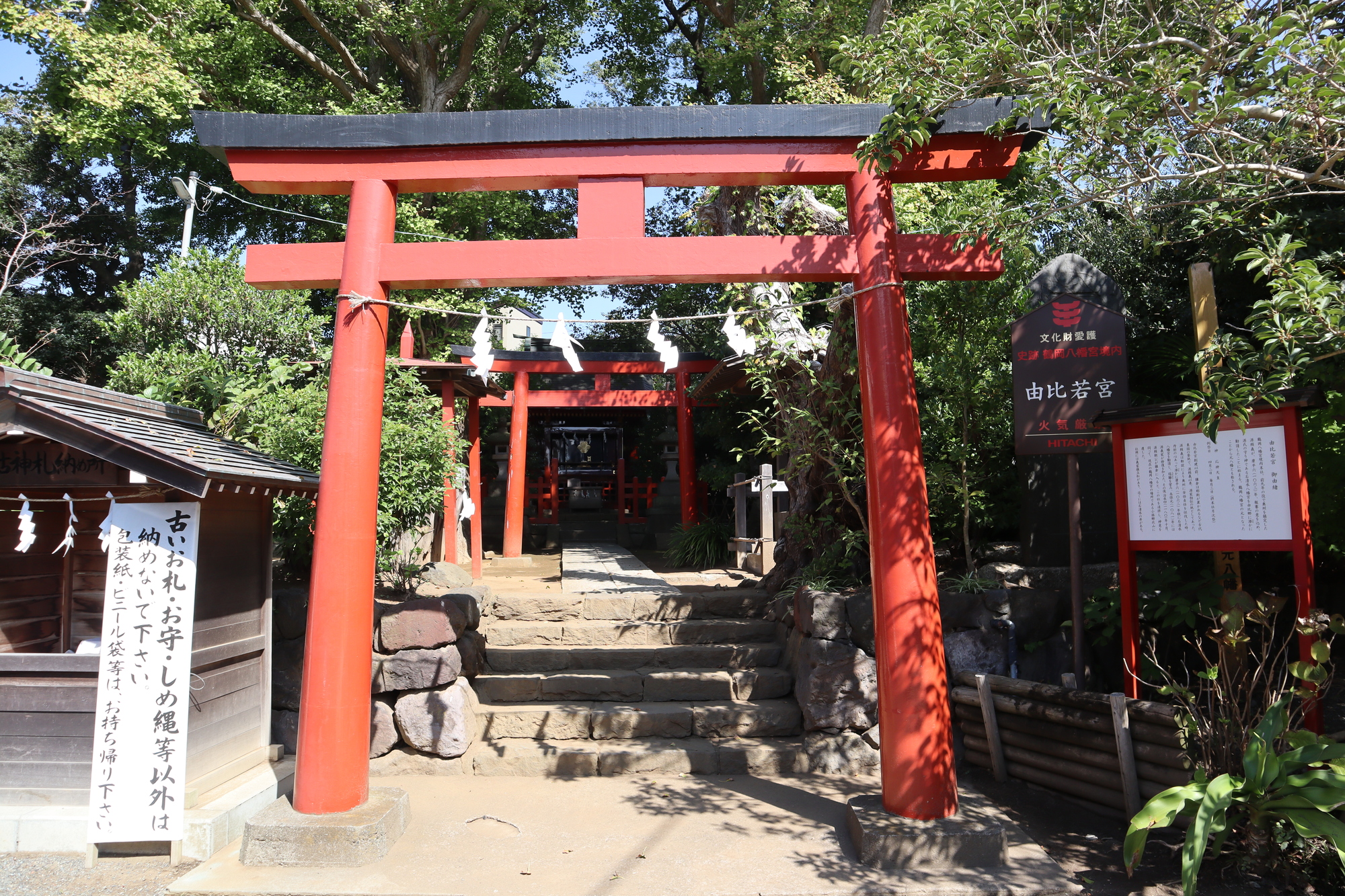
Yuigahama Shrine (Moto-Hachiman)
The Silent Shrine That Speaks of Beginnings
Nestled quietly in the shadow of the grand Tsurugaoka Hachimangū lies Yuigahama Shrine (由比若宮), a sacred site considered the origin of Japan’s warrior government. Built by Minamoto no Yoshiie (源頼義) as a prayer for victory, this shrine holds deep historical significance. It was the first place Minamoto no Yoritomo (源頼朝) visited upon entering Kamakura, where he pledged his resolve to the deity Hachiman. This act marked Kamakura as the sacred land of the Genji (Minamoto) clan, a legacy that continues today. Located in a peaceful residential area, the shrine grounds feature a well symbolizing its connection to Iwashimizu Hachimangū in Kyoto, and talismanic arrows (Hamaya), passed down through generations, are still available for visitors. Away from the crowds, Yuigahama Shrine offers a quiet encounter with the origins of Kamakura.

